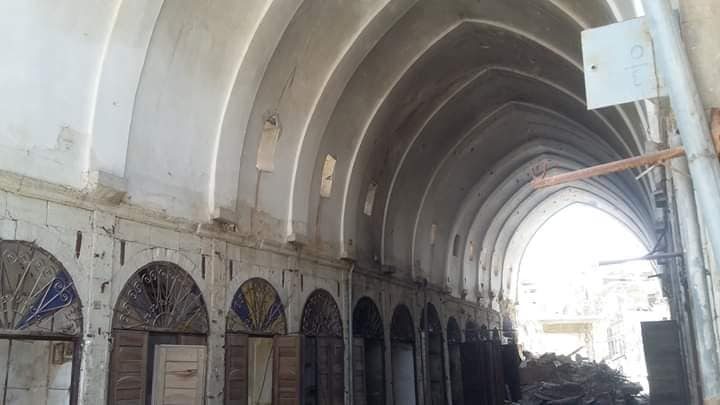The Old Covered Markets of Deir ez-Zor, locally known as al-Souq al-Maqbi, are a collection of historic commercial marketplaces established in 1865, during the final years of Ottoman rule. They were almost entirely destroyed by bombardment during the Syrian conflict in 2012.
These markets were founded under the administration of Khalil Bek Thaqib al-Urfaqli, who, upon being appointed as governor of Deir ez-Zor, invited skilled craftsmen from Urfa to plan and construct the city’s marketplaces. The first among them was Souq al-Miri (the Government Market), which became the nucleus of a growing commercial hub.
Due to their artistic, aesthetic, and historical value, and as the only surviving Ottoman-era monument in the city, the markets were officially registered with the Directorate of Antiquities to safeguard this cultural legacy.
In 1980, a law was passed to expropriate the old markets as municipal property, yet the shops remained in the hands of their original owners—serving as their primary livelihood.
The complex consists of seven ancient markets, all clustered in one area, forming a vital commercial center for the city:
• Souq al-‘Attarin (Perfume & Spice Market)
• Souq al-Tujjar (Merchants’ Market)
• Souq al-Haddadin (Blacksmiths’ Market)
• Souq al-Khashabeen (Carpenters’ Market)
• Souq al-Hubub (Grain Market)
• Souq al-Hibal (Rope Market)
• Souq Khalouf (Khalouf Market)















